|
The
collections in the Natural History Museum in Rijeka are classified according
to systematics, stratigraphy and localities. The Museum houses the Collection
of rocks, the Collection of minerals, the General paleontological collection,
the Evolution of Man Collection, the Geological stratigraphic collection
with specimens from the Rijeka region, the Quartar fossil fauna collection
with specimens from the caves of the Rijeka region, the Paleontological
collection with exhibits classified per localities, the invertebrates
collections, the vertebrates collections and botanical collections.
| INORGANIC
WORLD |
|
No.
|
Collection |
Manager |
No.
of specimens
|
Total
No.
|
Entered
in database
|
Database |
Ctg
|
|
1.
|
Minerals |
Koraljka
Klepač |
578
|
578
|
578
|
ACCESS
PMR |
B
|
|
2.
|
Rocks |
Koraljka
Klepač |
325
|
325
|
-
|
-
|
B
|
|
3.
|
General
palentological |
Koraljka
Klepač |
527
|
527
|
-
|
-
|
B
|
|
4.
|
Evolution
of Man |
Koraljka
Klepač |
86
|
86
|
86
|
ACCESS
PMR |
B
|
|
5.
|
Geological
stratigraphic of the Rijeka region |
Koraljka
Klepač |
77
|
77
|
-
|
-
|
B
|
|
6.
|
Quarternary
fossil fauna from the caves of the Rijeka region |
Koraljka
Klepač |
504
|
504
|
-
|
-
|
B
|
|
7.
|
Paleontological
according to localities |
Koraljka
Klepač |
575
|
697
|
233
|
ACCESS
PMR |
B
|
|
8.
|
Geological
stratigraphic of the island of Krk |
Koraljka
Klepač |
225
|
225
|
216
|
ACCESS
PMR |
B
|
| ZOOLOGY |
|
MARINE
INVERTEBRATES
|
|
9.
|
Porifera |
Marin
Kirinčić |
99
|
99
|
99
|
ACCESS
PMR |
C
|
|
10.
|
Cnidaria |
Marin
Kirinčić |
163
|
163
|
163
|
ACCESS
PMR |
C
|
|
11.
|
Anellida |
Marin
Kirinčić |
50
|
50
|
50
|
ACCESS
PMR |
-
|
|
12.
|
Malacological |
Milvana
Arko-Pijevac |
9.266
|
10.000
|
300
|
ACCESS
PMR |
B
|
|
13.
|
Crustacea |
Marin
Kirinčić |
262
|
262
|
262
|
ACCESS
PMR |
B
|
|
14.
|
Tentaculata |
Marin
Kirinčić |
10
|
10
|
10
|
ACCESS
PMR |
-
|
|
15.
|
Echinodermata |
Marin
Kirinčić |
82
|
82
|
82
|
ACCESS
PMR |
B
|
|
16.
|
Tunicata |
Marin
Kirinčić |
25
|
25
|
25
|
ACCESS
PMR |
-
|
| LAND
INVEREBRATES |
|
17.
|
Entomological,
Depoli |
Marin
Kirinčić |
389
kutije
|
389
kutije
|
389
kutije
|
ACCESS
PMR |
A?
|
|
18.
|
Malacological,
Dobijaš |
-
|
cca
9.000 predmeta
|
-
|
-
|
-
|
A?
|
|
VERTEBRATES
|
|
19.
|
Ichtiological |
Marcelo
Kovačić |
975
|
2.477
|
975
|
ACCESS
PMR |
A
|
|
20.
|
Herpetological |
Marcelo
Kovačić |
178
|
178
|
178
|
ACCESS
PMR |
C
|
|
21.
|
Ornitological |
Marcelo
Kovačić |
258
|
258
|
258
|
ACCESS
PMR |
C
|
|
22.
|
Mammals |
Marcelo
Kovačić |
115
|
115
|
115
|
ACCESS
PMR |
C
|
| BOTANY |
|
23.
|
Algae |
-
|
50
|
50
|
-
|
-
|
-
|
|
24.
|
Cormofita,
Emili |
-
|
-
|
1.000
|
-
|
-
|
-
|
| DOCUMENTATION |
|
25.
|
Hemerotheca |
Ivo
Bilopavlović |
4.312
|
4.312
|
4.312
|
ACCESS
PMR |
-
|
|
26.
|
Diatheca |
Ivo
Bilopavlović |
766
|
766
|
766
|
ACCESS
PMR |
-
|
|
27.
|
Phototheca |
Ivo
Bilopavlović |
1.173
|
1.173
|
1.173
|
ACCESS
PMR |
-
|
|
28.
|
Research
library |
Ivo
Bilopavlović |
4.260
|
cca.5.000
|
4.260
|
CDS/ISIS |
-
|
Ctg
- Category
|
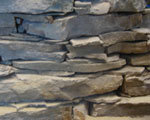 Collection
of Rocks Collection
of Rocks
The
Collection of Rocks holds various litospheric rocks systematically arranged
into groups of magmatic, sedimentary and metamorphic rocks. All kinds
of both, building and decorative stones of the Rijeka region are presented
(Jurassic, Cretaceous, Paleogene limestones and breccias; Triassic andesite).
The collection holds the oldest object in the Natural History Museum in
Rijeka - a specimen of silicic sedimentary rock composed of flint found
in 1872 on Iceland. There is also a specimen of travertine, found in 1892
at the Plitivice Lakes, Croatia.
Collection of Minerals
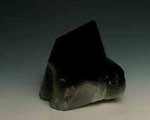 Collection
of Minerals Collection
of Minerals
The Collection of Minerals holds various minerals from typical localities
in the world, systematically arragned based on their chemical structure.
Systematic classification gives an insight into a variety of shapes and
sizes of one and the same kind of mineral from different paragenetic localities.
Valuable are specimens of different crystals of quartz, specimens of crystals
of ore minerals and gemstone jewellery.
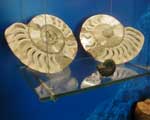 General
Paleontological Collection General
Paleontological Collection
The General Paleontological Collection has a great historic value. Organized
according to the rules of biostratigraphy, it consists of fossil specimens
the greatest number of which were acquired in late 19th and the beginning
of the 20th century on the territory of Austria, Hungary, Czech Republic,
Slovakia, Germany, Italy and Greece. The collection also holds some of
the oldest specimens in the Natural History Museum in Rijeka: shelly limestone
found in Greece in 1875, a cave bear tooth (Ursus spelaeus) found
in Czech Republic in 1878, an impression of a laurel leaf (Laurus)
found in Germany in 1883, and an impression of a fern leaf (Lepidodendron)
found in Jehlcisien in 1890.
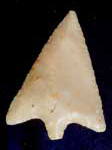 Evolution
“Evolution of Man” Evolution
“Evolution of Man”
The Evolution of Man Collection consists of moldings (copies) of the bones
of the representatives of the hominid's evolutionary stages (Australopithecus,
Homo habilis, Homo erectus, Homo sapiens neanderthalensis), moldings of
their artefacts, of the fossil fauna of the period, and original skull
bones of modern man (Homo sapiens sapiens).
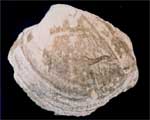 Geological
Stratigraphic Collection of the Rijeka Region Geological
Stratigraphic Collection of the Rijeka Region
The Geological Stratigraphic Collection of the Rijeka Region holds various
rocks and fossils which reveal the litologic structure and biostratigraphy
of the deposits of the Rijeka region from the oldest rocks dating back
to Carbon to the youngest that sedimented during Paleogene. Important
are specimens of ore resources of the Rijeka region.
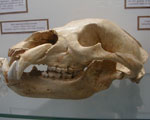 Collection
of Quarternary Fossil Fauna from the Caves of the Rijeka Region Collection
of Quarternary Fossil Fauna from the Caves of the Rijeka Region
The Collection of Quarternary Fossil Fauna from the Caves of the Rijeka
Region holds numerous fossil bones and teeth discovered in 25 caves, thus
supporting the diversity of the Peistocene animals. The Collection also
holdsawell preserved cave bear skull (Ursus spelaeus ROENMULLER
& HEINROTH) found in Sparožna cave in the Kastav area, a skeleton
of a fossil brown bear (Ursus arctos LINNE) found in the Baniæ
cave on the island of Cres, and artefacts of Peleolithic and Mesolithic
cultures.
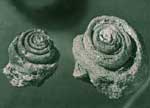 Paleontological
Collection According to Localities Paleontological
Collection According to Localities
The Paleontological Collection According to Localities was the result of research conducted in Istria, on the Croatian littoral and on the islands of Cres, Krk and Rab. It holds numerous fossil specimens from the Jurassic, Cretaceous, and Tertiary (primarily Paleogene) which document biostratigraphy of the region. Eocene macrofossils from limestone and clastic deposits of the island of Krk, that the collection holds are the most important and of great value for scientific study.
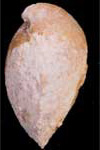 Geological
Stratigraphic Collection of the Island of Krk Geological
Stratigraphic Collection of the Island of Krk
Within the work on interpretation and revitalization of the natural heritage
the Museum has established a regional collection in Dobrinj on the island
of Krk: Geological Stratigraphic Collection of the Island of Krk. The
Collection resulted from the collaboration between the Museum and Dobrinj
municipality. Displayed are 216 specimens of fossil foraminifers (nummulites),
corals, bivalves, snails, echinoids, and Paleogene and Cretaceous rocks
found of the island of Krk. A geological map, legends and photographs
of the finding sites support the original specimens.
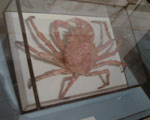 Marine
Invertebrates Collection Marine
Invertebrates Collection
The Marine Invertebrates Collection
contains specimens of sponges (Porifera),
cnidaria (Cnidaria), polychaetes (Policheta),
crustacean (Crustacea), bryozoans (Bryozoa),
echinoderms (Echinodermata) and Tunicata.
The collection originates from the Hungarian Royal Biological Station
that operated in Rijeka in the period 1905 - 1918. Some of the specimens
were collected during field research on the Bios research vessel. Since
1987 the specimens have been collected during autonomous diving along
the transects. The biological specimens of our collections are stored
in the form of wet and dry preparations (animal skeletons). The computer
database has been kept since 1997.
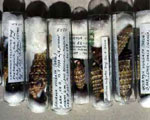 Malacological
Collection Malacological
Collection
The Malacological collection holds 10000 specimens of gastropods, bivalvia
and cephalopods. The bivalvia collection is, according to experts, a collection
of B category, since out of 224 known Adriatic species, after the invertebrate
list published in 1997, it contains 135 species from the northern Adriatic,
some of them identified in the aquatorium for the first time.
The continual field research to collect specimens for the malacological
collection began in 1961 on the island of Rab. It went on until 1982.
The research was conducted by Museum's experts independently and in cooperation
with the scientists from the Marine Research Center of the Ruðer Boškoviæ
Institute in Rovinj. The shallow infralittoral was researched by visual
observation method during free diving. Deeper zones were researched by
autonomous diving; photo documentation was gathered in association with
external experts. Small boats and Vila Velebita, the research vessel,
were used to reach the sites. A knife, tweezers, a shovel, a special basket,
a sieve to sift the substratum, the bottom grab and the rectangular sledge
were used to collect the specimens. Taxonomic determination of the collected
material expanded our knowledge of specific species with data on distribution,
depths, sea floor characteristics and biometric indicators. Fifteen scientific
papers were published. In the island of Rab littoral 83 bivalvia species
were determined, and on the islands of northern and central Adriatic,
including Rab, the total of 117 bivalvia species were determined. Those
specimens formed the basis of the malacological collection and the Museum's
curator Mirjana Legac, an expert in mollusks, was listed in the International
Directory of Marine Scientists. Within the federal project Organic Production
of Marine Ecosystems the Museum curators worked on the Biocenological
research on the channel area (the Rijeka bay, the Srednja vrata channel
and northern Kvarneriæ). With the Bios research vessel 68 parallel
stations on 50 profiles were researched in the period 1965 - 1969. A bottom
grab of the Petersen, Van Veen type, a rectangular sledge and a trawlnet
were used to collect specimens. Specimens were added to the malacological
and ichtiological collections, and Museum's experts were listed in the
International Directory of Oceanographers.
A federal project Flora and Fauna of Yugoslavia was conducted within the
master project Complex research of the Adriatic. Museum's experts participated
in the Flora and Fauna of the Adriatic project in the period 1969-1970.
The goal of the project was to solve the basic issues in the research
of the Adriatic (inventarization and catalogization). Mirjana Legac, B.Sc.
worked on inventarization and catalogization of the bivalves and the cephalopods.
For the purpose of the project the Kvarner bay area was researched with
the Neverin boat until 1977. The newly acquired data enabled detailed
description of the bivalvia and cephalopods of the northern Adriatic,
and supplied data on the numerosity, sea floor characteristics and species'
distribution. In 1963 the UNESCO international program Man and Biosphere
was launched.
In the period 1987 - 1999 the bivalves for the malacological collection
were collected during autonomous diving within the scope of Biocenological
research of the western coast of the island of Krk, of the Vinodol channel,
Rijeka bay, and islands of Goli, Prviæ and Grgur. Since 1997, when
Mirjana Legac retired, the curator Milvana Arko-Pijevac, B.Sc. manages
the malacological collection. Since 1997 the collection has been entered
in ACCESS computer program.
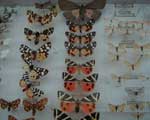 Entomological
Collection Entomological
Collection
Entomological collection was established concurrently with the Museum,
by rescuing the abandoned specimens collected by G. Depoli, Goidanich,
Hafner, J. Splichai, dr. V. Beszedes, Neuburger, R. Mikšiæ
and others. The collection of Guido Depoli was categorized in the A category,
and is thus, with the accompanying card files and field work notes, priceless.
It presumably contains a number of holotypes from the Coleoptera group.
The entomological collection holds 375 entomological boxes and 13 wet
preparations with 50 053 specimens.
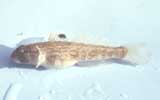 Ichtiological
Collection Ichtiological
Collection
Ichtiological collection was, as well as other collections the Museum
currently houses, established in 1945 by collecting the specimens of the
dissolved Hungarian Royal Biological Station, City Museum (Museo Civico),
and various schools in Rijeka. Also, new specimens were added to the collection.
In 1992 a curator ichtiologist took over the collection and the number
of newly acquired specimens increased rapidly. There are wet and dermoplastic
preparations, skeletons or their parts and jaws in the collection. The
collections holds about 2000 specimens for 280 species. Especially valuable
specimens of the collection are species of goby fish that can only be
found in few museums in the world. Among them types of the Gobius kolombatovici
Kovačić and Miller species should be singled out. The fish is 10 - 12
cm long, and belongs to the goby family (Gobiidae). It is of characteristic
color, and has longitudinally arranged orange spots, with a black spot
on the first dorsal fin. In 1998 it was discovered in four localities
along the east coast of the island of Krk. It lives at the depth of 15
- 38 meters, on the sea floor composed of detritic sand, fine gravel and
stones, most often along steep underwater rocks. Not much is known about
the species, as is the case with most of the Mediterranean goby fish,
many of which were described already in the 19th century.
|







